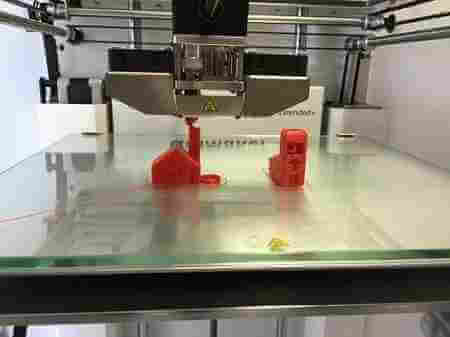Blog
The Trend for 3D Printing in Gold, Silver and Other Precious metals
3D printing in gold
3D printing is a revolutionary manufacturing process that has taken the world by storm over the last few years. The process requires uploading the design of the object to be printed in a 3D file format on a computer. This information is then transferred onto the 3D printing machine, which uses a material of your choice to create the object. Printers all over the world have been experimenting with materials, and precious metals are no exception. 3D printing in gold and other precious metals follows a process known as the lost wax method.
The method is essentially a casting system, where the exact model of the item to be created is first printed as a wax model. Then a mould is created around this, the wax is burnt out and filled with gold or any other precious metal. After the metal has cooled completely, the mould is broken off and the gold item is ready for finishing.
Fancy gold, but unsure how to buy? Read our FREE Insiders Guide to Gold here
The bounding box
The size of the bounding box, which is essentially a frame is created according to the specifications of the printer itself. The casting moulds are usually made of plaster and all of this needs to fit within the dimensions of the bounding box. A supporting wall is then put in place on two or more sides. If this wall is too thin, it would disintegrate during the mould creation process.
Different materials can be used to make the supporting walls, and various manufacturers base their choice of materials depending on the kind of printer they are using. Escape holes are an important consideration when building the mould, as the holes need to be large enough to introduce the plaster, as well as remove it. Another important consideration is the shrinkage factor. The model usually shrinks up to 2.5% after casting and finishing. So, this needs to be factored into the process at the design stage itself.


Getting the details right
Working with precious metals isn’t easy and due care needs to be taken when printing the wax model. Most items made of precious metals will have an aesthetic appeal, so the printer needs to properly interpret the design details of the object being made. The greater the resolution of the printer, the higher the level of detail. Details smaller than the printer’s minimum resolution may not print properly or erode during the polishing process.
The best precious metals for 3D printing
3D printing is otherwise known as additive manufacturing. The machine uses a cartridge based system, which transports the material to the build area. The best material to work with is platinum. Although platinum is difficult to use for a casting in normal circumstances, it works well with a 3D printing setup. Platinum delivers high-quality castings with a density of 99.9% when compared to a density of 99.2%, which can be achieved by normal casting operations.


Next, in line come the various alloys of gold. 22k gold is too malleable to be used in the 3D printing process, so 14k or 18k gold is often used. Silver comes next in the pecking order, however, one of the issues with using silver is its reflective property, which makes it a difficult material to use in 3D printers. However, silver is also cheaper making it popular as a precious metal for manufacturing. New developments in technology that are slowly being introduced, may alleviate the current issues being faced when working with silver. A UK company that is breaking new ground in 3D printing with silver is Cooksongold.
Call us to find out more about 3D printed objects made out of precious metals
At Physical Gold, our team of experts can guide you on everything related to the precious metals industry. Call us on 020 7060 9992 or contact us online to find out more about the latest technology trends in the manufacture of gold, silver and platinum jewellery and artefacts.
Image credit: Pixabay

